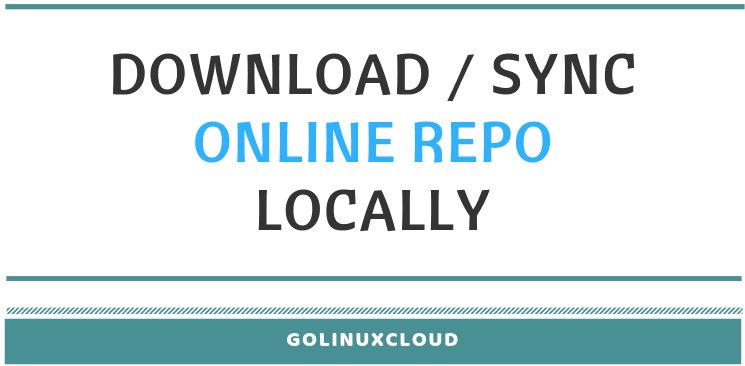

Run the commands below: sudo reposync -g -l -d -m -repoid=base -newest-only -download-metadata -download_path=/var/www/html/repos/ sudo reposync -g -l -d -m -repoid=centosplus -newest-only -download-metadata -download_path=/var/www/html/repos/ sudo reposync -g -l -d -m -repoid=extras -newest-only -download-metadata -download_path=/var/www/html/repos/ sudo reposync -g -l -d -m -repoid=updates -newest-only -download-metadata -download_path=/var/www/html/repos/ This allows systems on the same network to install updates more efficiently. Here you need to download a local copy of the official CentOS repositories to your server. You will see something like this in your output: Otputĭeltarpm.x86_64 0:3.6-3.el7 python-deltarpm.x86_64 0:3.6-3.el7Ĭomplete! How To Create a Directory to Store the Repositories on Centos 7Īt this point, you need to create a directory to store the repositories.įor an HTTP repository, run the following command: sudo mkdir –p /var/www/html/repos/įor an FTP repository, run the command below: sudo mkdir –p /var/ftp/repos How To Synchronize HTTP Repositories on Centos 7 Run the following command: sudo yum install createrepoĮnter “ y” to download the package. To create a YUM repository you can use the “ createrepo” software package. How To Create a YUM repository on Centos 7 You can check our article about how to install Nginx on Centos 7. Reload the firewall to apply the new rules: sudo firewall-cmd -reloadĪlso, you can use Nginx as a web server instead of Apache. # sudo firewall-cmd -zone=public -add-port=80/tcp # sudo firewall-cmd -zone=public -add-port=21/tcp Note: Open the correct port on your firewall.

If you use FTP run the following command instead: sudo yum install vsftpd Install the Apache web services package to use HTTP on Centos 7 by running the following command: sudo yum install httpd If you have configured an Apache web server or an FTP server follow these steps:

Yum typically delivers files over FTP or HTTP. You need to configure the system for network access. To do this, you can follow our guide on Setting up a Firewall with firewalld on Centos 7. If you don’t know how to do that, check our article about the Initial server setup with Centos 7.Īlso, you need to set up a basic firewall. To set up Yum repositories on Centos 7 you need to log in to your server as a non-root user with sudo permissions.

Steps To Set up a YUM Repository on Centos 7 Yum is a free and open-source command-line package-management utility for computers running the Linux operating system using the RPM Package Manager. Each repository is a collection of software hosted on a remote server and intended to be used for installing and updating software packages on Linux systems. In this article, we want to teach you How to set up a YUM repository on Centos 7.Ī Linux repository is a storage location from which your system gets back and installs OS updates and applications.


 0 kommentar(er)
0 kommentar(er)
